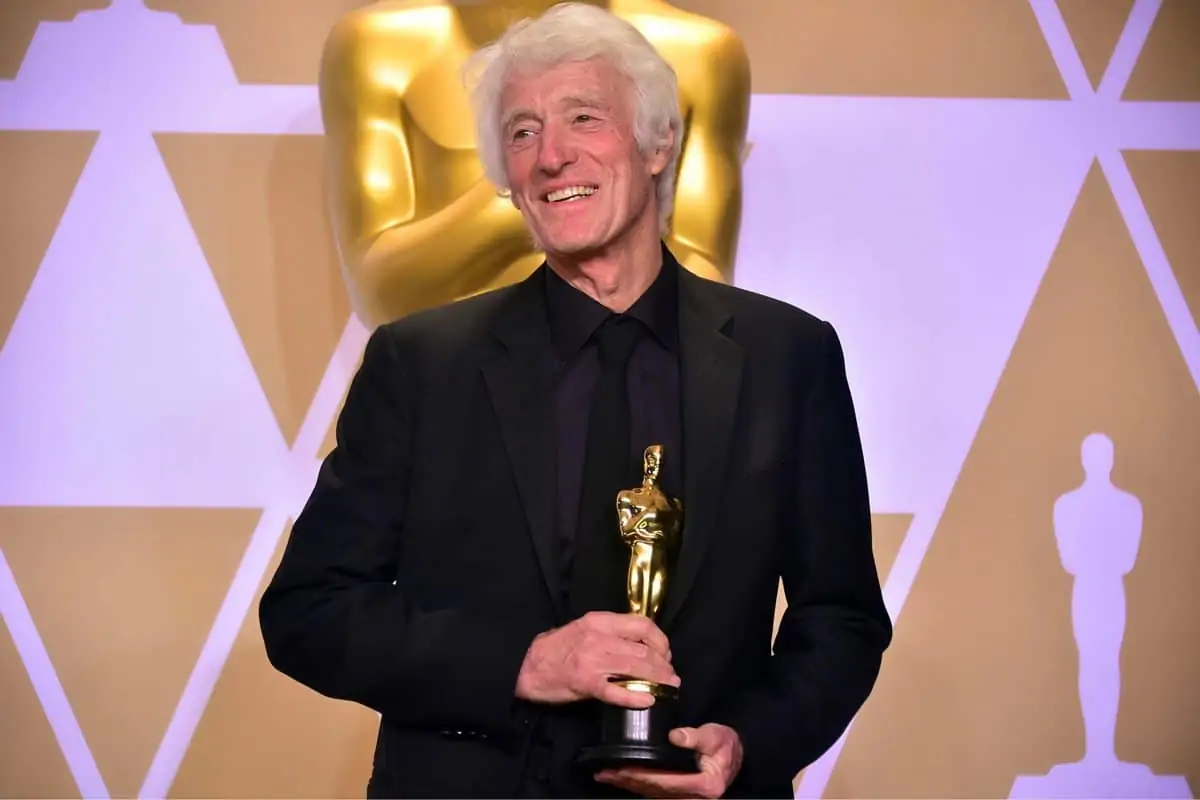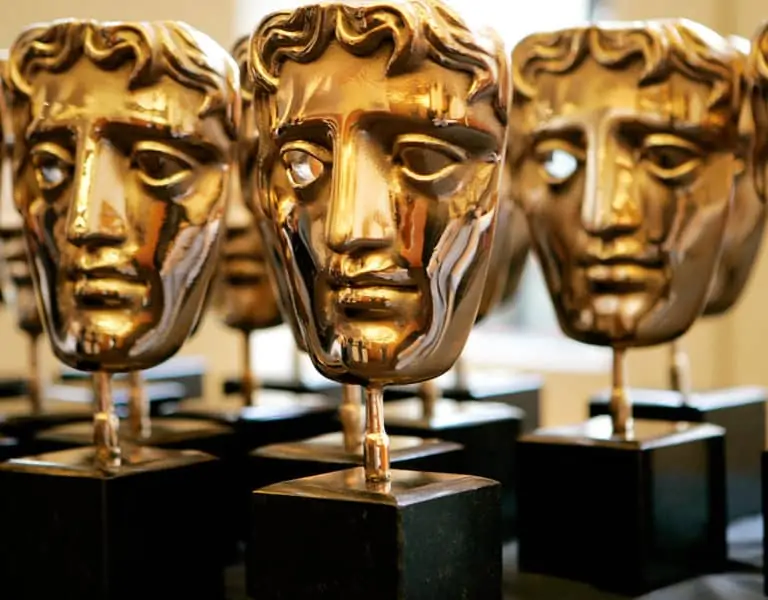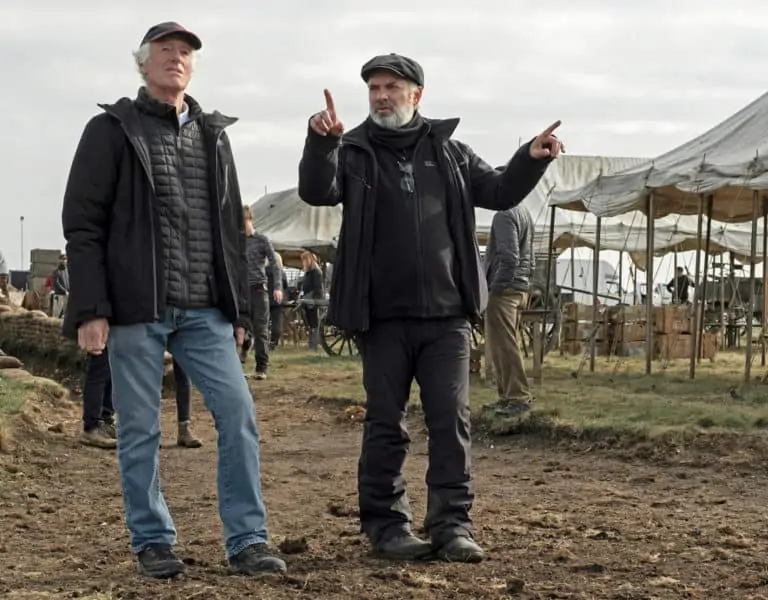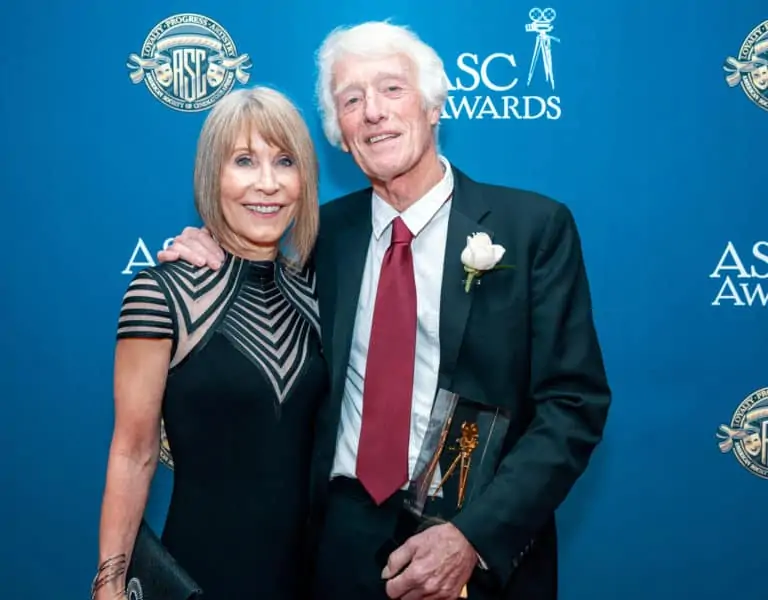More Human Than Human
Roger Deakins CBE BSC ASC / Blade Runner 2049
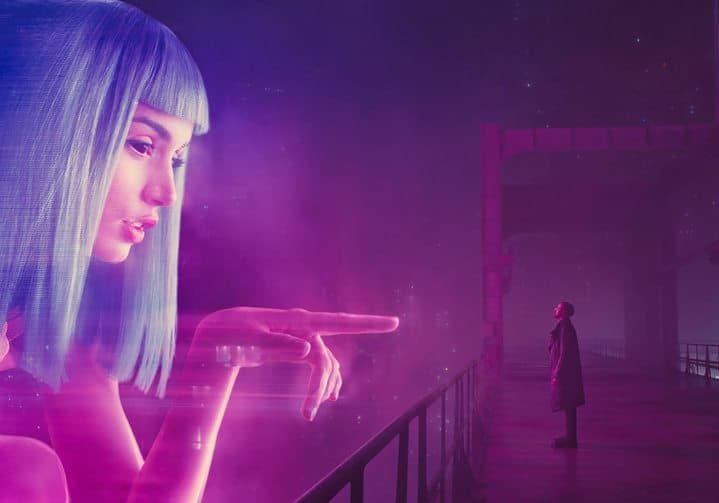
More Human Than Human
Roger Deakins CBE BSC ASC / Blade Runner 2049
BY: Ron Prince
Three decades after the events of the first film, a new blade runner, LAPD Officer K (Ryan Gosling), unearths a long-buried secret that has the potential to plunge what’s left of society into chaos, and bring an end to humanity. K’s discovery takes him on a quest to locate Deckard (Harrison Ford), the former LAPD blade runner who has been missing for 30 years.
Development of a sequel to Sir Ridley Scott’s Blade Runner (1982, DP Jordan Cronenweth ASC) began in 1999. However, the project was shelved due to problems concerning the rights to Philip K. Dick’s 1968 novel, Do Androids Dream of Electric Sheep?, with similar issues besetting other proposed sequels, series and shorts.
After much rumour that Scott would direct a new installment, it was announced in November 2014 that he would in fact produce a new film instead. On February 26, 2015, Blade Runner 2049 was confirmed, with Canadian Denis Villeneuve in the director’s chair. Harrison Ford was also confirmed to return as Deckard, as was original writer Hampton Fancher, with the film entering production in mid-2016.
Having previously worked with Villeneuve on the much-acclaimed Prisoners (2013) and Sicario (2015), Roger Deakins CBE BSC ASC was invited to perform cinematographic duties on the new production.
Although Villeneuve and Deakins scouted for locations in London, and discovered a number of inspirational sites, there was precious-little studio space in the UK. So the pair were forced to cast their net further afield. The production was eventually based out of Origo Studios near Budapest, Hungary, with the further-out-of-town Korda Studios providing additional stage space for the many elaborate sets. Locations included a brace of former Soviet power stations, along with other suitably dystopian buildings around Budapest. Production took place from July to November 2016.
Ron Prince caught up with Deakins as the cinematographer was putting the final touches to the production’s 2D, 3D and IMAX release versions, assisted by his wife James Ellis Deakins.
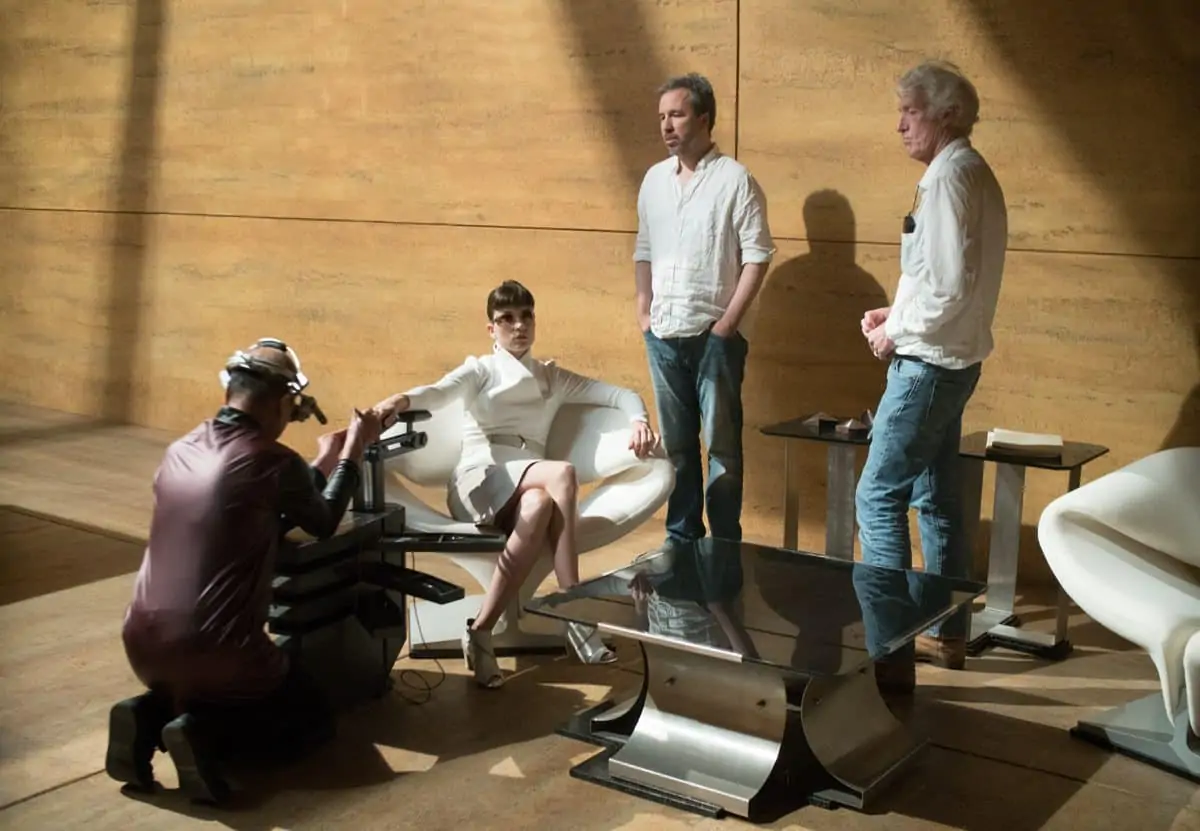
Thanks for meeting up. I imagine you’re pretty busy finalising the movie?
RD: Yes, I’ve nearly completed the main DI, and it’s a hectic time getting the different 3D, IMAX and HDR releases ready. I’m a bit picky about these things. For example, I am very conscious that 3D can go too far if someone’s not supervising it, and the result can suddenly adopt a Marvel comic type-of-look. Blade Runner 2049 is not that sort of film. Plus, there are lots of VFX to put in place. Although we tried to do as much as possible in-camera, nothing is quite as big as you really want on-set. So there are lots of digital set extensions to give the picture more scale and scope, and plenty of other small changes to be made in frame. Denis is a stickler for details, and thankfully James is keeping track on all of this.
This is your third film with Denis, but how did you get to know him originally?
RD: In 2011, I was asked by the Academy to introduce the best foreign language film director nominees at a soirée, one evening before the Awards ceremony. Denis was one of the nominees, with Incendies (DP André Turpin AFC). He had shot all of his previous films in Canada, and when I heard later that he was to make his next film, Prisoners, in the US, I asked my agent to ask if he had anyone in mind. We collaborated successfully together on Prisoners, and then asked me to shoot Sicario.
When did you first hear about Blade Runner 2049?
RD: I had heard rumours that maybe Ridley was not going to direct Blade Runner 2049, and they were looking for a director. We were just finishing Sicario, when Denis mentioned his involvement.
What were your initial thoughts and feelings about being invited to shoot Blade Runner 2049?
RD: It was the sort of opportunity you can’t say no to really. The original movie, although it was not successful at the time, has since become an iconic standard. So whilst it was daunting prospect, Denis makes his own films. This was not going to be a follow up in a traditional sense – rather more a standalone film with connections to the original in terms of story points. Also, I love science-fiction – interesting sci-fi, rather than science fantasy – and love the novels of Phillip K. Dick. The closest I had ever come to sci-fi was 1984 (1984) and In Time (2011) – but one was long ago with little science and now seems less and less like fiction, whilst the other was shot with a very contemporary look. This production was of much bigger scope and working with Denis again was very attractive.
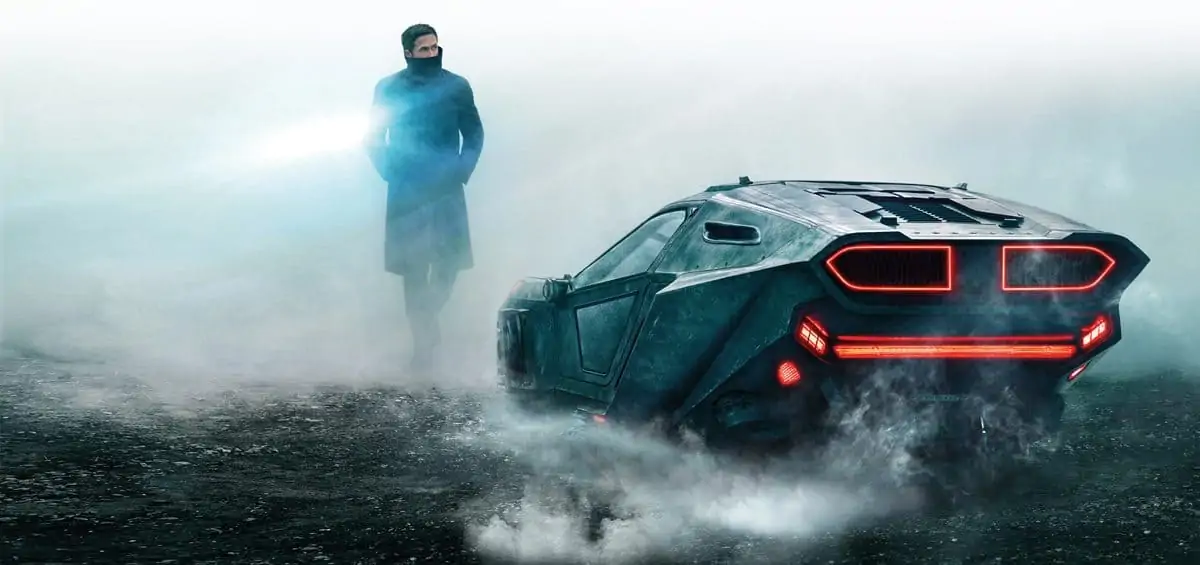
Tell us about your discussions regarding the look of the movie?
RD: It’s a long old process really. Denis and I functioned as we did on Prisoners and Sicario – focussing on storyboarding the script during pre-production. We spent a long time on this. I initially went to Montreal, where Denis was editing Arrival, and we would sit with a storyboard artist and sketch and play with ideas. I then also worked separately in LA with another storyboard artist. We spent several months on this, on and off, and the storyboarding went on right until a few days before we started shooting,
Did Sir Ridley dispense any advice or guidance to you cinematographically?
RD: I talked with Ridley for a time in general terms regarding the world, about the smog of Beijing, for instance, but that was about it. He was busy on his own film.
Did you watch the original movie?
RD: Yes, I did, but not with a mind for taking anything particular from it, other than to explore the story points. The original was essentially a cops and robbers premise, about a man searching for replicants and taking them out before falling for one. It was a strong, straightforward plot. It touches on what it means to be human, and how far AI and bioengineering go before humanity is lost or replicated, but it was, in essence, a noir-ish detective movie. As I have said, Denis’ film is standalone, and quite different in its mood and look. The new film is more of a mystery and, perhaps, more psychological than an action piece.
What were your visual references?
RD: I watched Andrei Tarkovsky’s Solaris (1972, DP Vadim Yusov) a couple of times – not that it bears much relation to what we were doing, but it is a film I love. My main references came from general searches I did on the Internet relating to stern, modern, brutalist, concrete architecture, looking at how they use natural light as part of their design. What I found was really the greatest stimulation for what I wanted to do.
Early on, Denis and I went on a series of scouts in and around London, and there’s no doubt that we found some wonderful structures there. They formed a template for some of what you see in the final movie, but there was no studio space available in the UK so we were not able to shoot there. So we broadened our recces to Slovakia and then Hungary, where we found a number of fantastic locations, including a couple of old Soviet power stations – one of which we shot at for real, the other which Dennis Gassner, the production designer, used as a guide for a stage set. We needed a lot of stage space for the many set-builds and Ridley had suggested we look at Budapest where he had shot The Martian. Origo and Korda studios are good facilities and both were available.
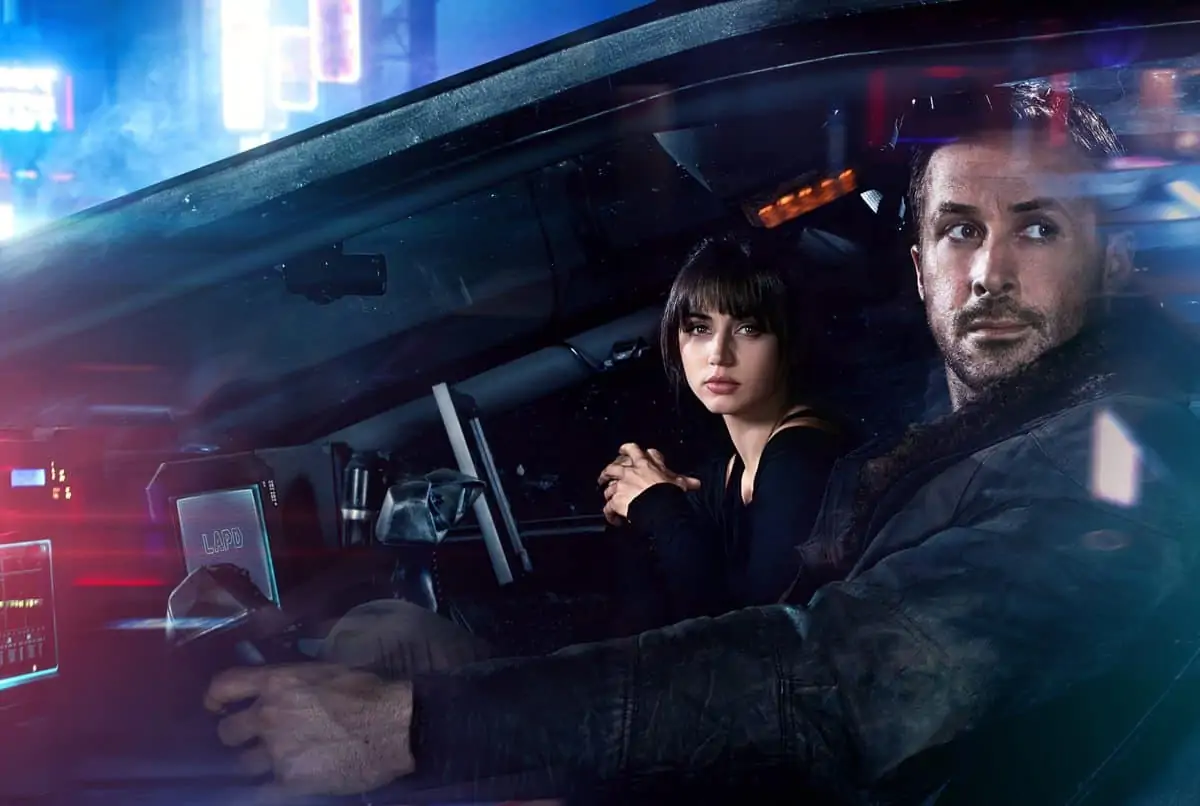
Why did you go with Alexa again? Were you not tempted by the Alexa 65?
RD: We tested the Alexa and Alexa 65, and did side-by-side comparisons. The Alexa 65 is very clean and sharp, and has an impressive image range, no doubt. But the Alexa XT has a certain texture and activity in the image. Nothing as strong as film grain, but something that both Denis and I preferred. We had been perfectly happy shooting with Alexas on Prisoners and Sicario, so we really didn’t want to change the formula. It was always intended that the film be released in IMAX and Skyfall was also released in IMAX, so I had some experience in shooting an image, which works the best for the two formats. Shooting spherical 2.40:1 on the Alexa works particularly well for IMAX as the extra space top and bottom negates the need to crop the frame, as would be the case in shooting Anamorphic. You really do gain more ‘image’ when you see the film in IMAX.
You went with the Zeiss Master Primes again. Why?
RD: Simply because the Master Primes are the fastest, sharpest lenses I can get my hands on. I like their clarity. If I want to soften the image, I do it by lighting or exposure on-set. I have never liked to use filtration, and don’t recall using a diffusion filter for many, many years.
For framing the characters, the lens of choice was typically a 32mm, as we did on Sicario, but to get the scale of some sets and cityscapes we went much wider than that – shooting with 14mm and 16mm lenses.
Testing is always crucial, tell us more about your work?
RD: I always like to make extensive tests of the cameras and lenses. Andy Harris, my first AC, took care of that part for me at ARRI in Munch. The key screen tests I did in advance were for some of the ‘exterior’ sets, which were being built on interior stages. We wanted LA to resemble an extremely smoggy version of Beijing, with constant rain and snow, and to create this on-stage, in-camera, and not by artificial effect in post. I had previously used misters on The House Of Sand And Fog (2003). You get a look that is similar to smoke, but with a different luminosity in the way light blooms.
Some were a bit skeptical of this approach, so, to convince and reassure them, I worked with the wonderful Germen special effects supervisor, Gerd Nefzer, who rigged-up a system of sprinklers and nozzles that could fill the stage with mist. As far as I was concerned the results looked really good and we ended-up using this system a lot during production. It was quite taxing to work with this level of humidity for 12 hours or more. Something like the Everglades on steroids. Of course, we could not use the air-con as it would destroy the atmosphere.
Did you create any LUTs to help with the overall look?
RD: Yes, just the one. I don't change LUTs from scene-to scene. I created a LUT for In Time at EFilm in LA, which I changed for Skyfall, and then further adapted with minor changes in contrast and colour for Prisoners and Sicario. EFilm modified it slightly for this production. I sometimes adjusted the colour a little on-set with my DIT Josh Golish, but anything done on set is non-destructive, so you can start afresh with the dailies or, at a later date, in the DI if you like. We viewed dailies with our dailies timer Matt Waller in a purpose built theater set-up by Efilm at Origo, or on an E Film calibrated EVUE system.
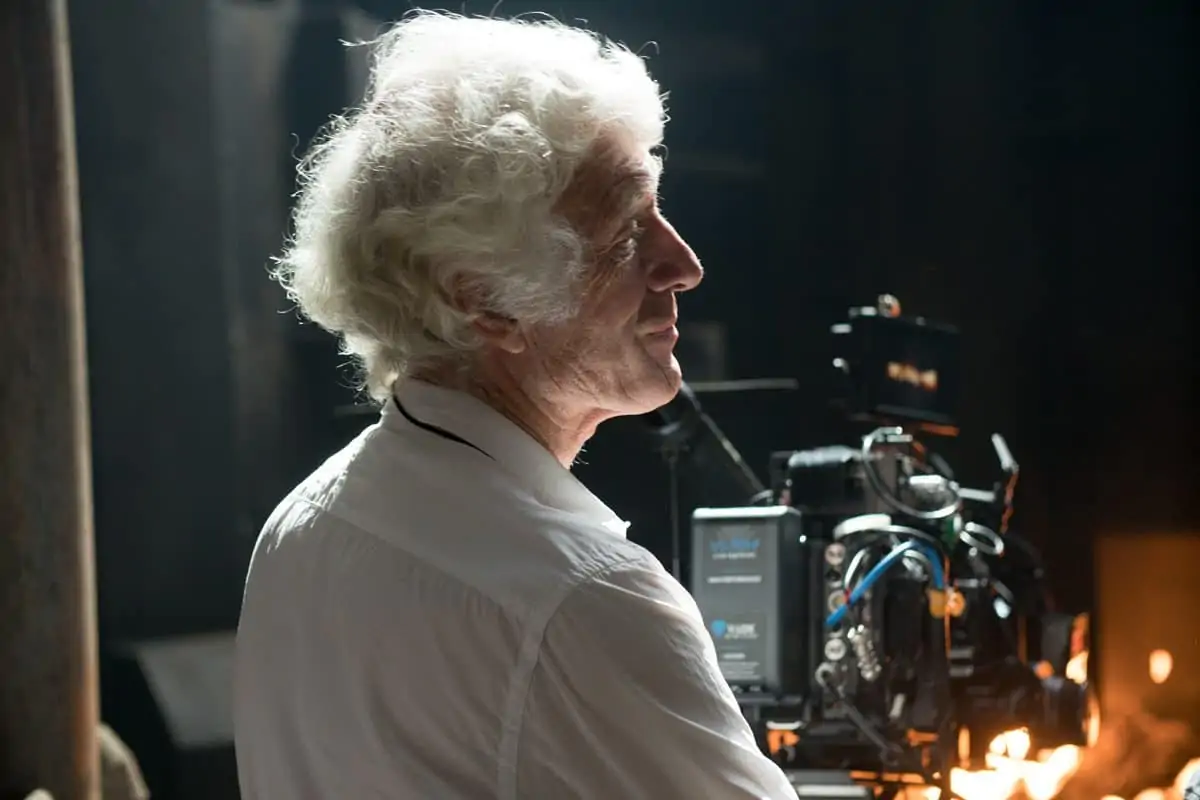
"Shooting spherical 2.40:1 on the Alexa works particularly well for IMAX as the extra space top and bottom negates the need to crop the frame, as would be the case in shooting Anamorphic."
- Roger Deakins CBE BSC ASC
Can you describe some of the looks you achieved on Blade Runner 2049?
RD: It has a wide variety of looks and atmospheres for the many different environments that action plays in. There’s the grey, foggy, smoggy dystopian city by day and night, and all manner of rain and snowstorms. The character Niander Wallace (Jared Leto), who builds the replicants, is blind, and I thought it would be ironically interesting to bathe the massive concrete building where he works with a warm world of moving sunlight, which Denis ran with.
The sets each came with their challenges. Sometimes we’d be lighting a set with 250 space lights and 32 x 12 light Maxi Brutes, sometimes with 76 ARRI SkyPanels, with 238 x 300W Betweenies, with a bare 24Kw bulb rigged to the bottom of a moving truss, or with just a few 2ft LED tubes supplied by Lightgear in London. We used lines of Colour Blast LED lights or Bad Boy spotlights to create the effect of overhead flying vehicles passing by. One set is lit by a 40’ x 30’ LED screen playing back an image we shot in pre-production, again similar to something we had done in Skyfall. Then there are variously settings where the overall cast is red or orange and for these we needed to gel every light with a specific filter pack.
There’s a scene set in a big stage show, for which we just used theatrical spotlights. That was interesting for me as we spent a lot of time in pre-production, working on a special lighting previz, so we knew exactly how the lighting had to be rigged with only a short time between rigging and shooting. The lighting had to be carefully choreographed and programmed, so that it was both in-sync with the action and repeatable on separate takes. We worked with Light Design Kft., a local company specializing in show lighting, and they did a fantastic job. I’ve done VFX previz before, and did some for the opening sequence, but doing a ‘lighting’ previz of a set was a new one for me.
How did you motivate the camera?
RD: I can’t say we took a particular approach to moving the camera. Overall, Denis’ style is sparse. He prefers wide shots, and likes to let the action play out in front of camera – nothing frenetic – which gives the actors space to perform, and gives the audience a relationship with the overall frame.
I operated, with Andy as my first AC. For a lot of the time I had the camera on my preferred Aerocrane. This is a sectional jib arm that can extend to around 14ft, and I use it in conjunction with a Power Pod remote head. It’s fast to set-up and you can reframe and make changes quickly as the scene develops. You just need a good dolly grip like Bruce Hamme, and a key grip like Mitch Lillian, to make it work. They were both very ably assisted by Attila Szûcs. When we needed a second camera or Steadicam I was fortunate to have my longtime friend and expert Steadicam operator, Peter Cavaciuti.
Otherwise we used specific gear for specific shots. A 50’ Tehnocrane came in handy for a couple of sequences and, on the other extreme, we used a drone for some shots.
What was your main challenge on this production?
RD: The challenge of any film is to sustain an aesthetic over a period of time, with consistency and unity. I do obsess and agonise about what I want to do and how best to achieve it. Blade Runner 2049 was especially challenging – due partly to the sheer diversity of looks, and partly to the schedule. The production was relentless. Our schedule was for a 91-day shoot, quite ambitious for what was on the ‘wish list’, but we really cracked along at a good pace, given we were hardly on one set for more than a few days at a time. So I have to thank my gaffers – Bill O’Leary and Krisztián Paluch – plus the various rigging gaffers from Hungary, New York City and Italy.
A special thanks to production designer Dennis Gassner and his team of brilliant art directors, which included Paul Inglis and Rob Maclean, as well as our set decorator, Alessandra Querzola, who was a valued and tireless help.
The storm scene set at sea and at night was only one example of a sequence that provided a specific challenge, because of the elaborate effects rigs necessary to float cameras close to the water, whilst being pounded by effects waves, as well as shoot from beneath the waves in a vehicle whilst it was sinking. For this we had two 50ft cranes with remote Hydro heads, plus an Aquacam MK5 housing for the Alexa XT, plus two Nauticam housings for the Alexa Minis, so each could cope with the waves and submerge when necessary. We’d originally planned to shoot this complicated sequence in the existing facility in Malta, but we ended-up actually building our own tank on the backlot of a studio in Budapest. Our problem was with our schedule and facilitating a difficult move from Budapest to Malta and back. With an array of wave makers and dump tanks and with misters and smoke machines it was quite a number.
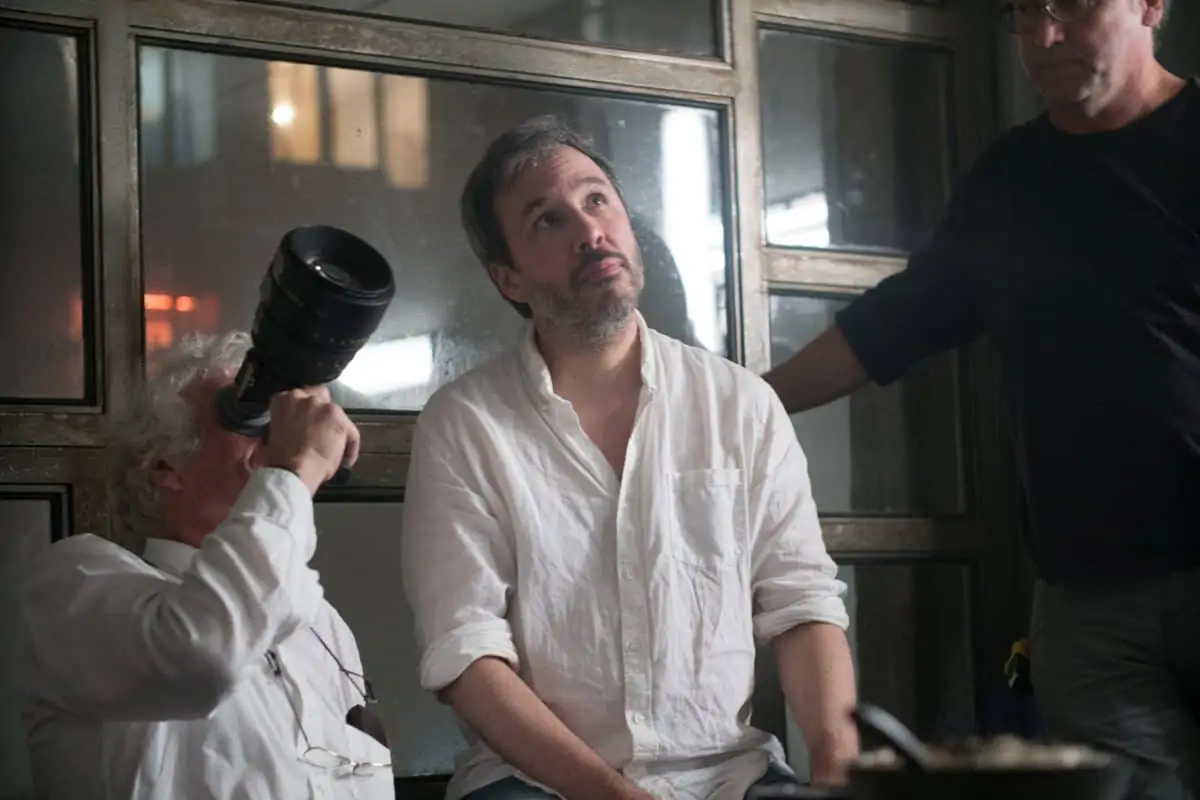
Some of the lighting set-ups look really cool. What can you tell us about these?
RD: My lighting ideas mainly start life as a rough drawing on a sheet of paper, and whilst they appear simple, it’s sometimes hard to get them built, rigged, powered, connected to dimmer boards and programmed – all in time for the shoot. For one scene, I had the idea of lights that circle slowly on the ceiling. This involved over 300 Betweenie 300W Fresnel lamps, fitted into two large concentric circles, which then had to be programmed so the light would chase around the circumference. For another situation we made three circular trusses of about 25ft diameter, each of which held 35 10Ks. These lamps were also programmed in a chase so that the effect was of a soft beam of sunlight crossing the set. I’d like to particularly thank our local dimmer operator, Titusz Badonics, and Stephen Mathie from the UK, with whom I also worked on Skyfall, for their help setting-up and operating the dimmer board.
Give us some detail about your work on the DI?
RD: A normal DI grade would take a couple of weeks. But because this movie has several hundred VFX shots, the post work for me has been piecemeal. We’ve been working on it for a good couple of months, paying attention to the details as new versions of VFX come in. I’m working at EFilm with Mitch Paulson, my regular DI grader, and when I complete the main 2K/4K DI, I will also oversee the 3D and the HDR versions.
What are your thoughts about HDR and your HDR work on Blade Runner 2049?
RD: HDR for me has many issues both good and bad. In the normal world you would not be looking at a light source of 1,000 or 4,000 nits. Certainly not in the dark. Whilst it is sometimes a bonus to have the range of blacks to highlights in an image, it is all too easy for that image to become painful to look at. To take the regular DI file and transfer it directly to HDR means the contrast and saturation go ballistic. We have a number of sequences, which are a blend of yellows and reds. Without making a specific LUT to translate the normal DI to HDR these scenes skew entirely to a deep red and lose any of the subtlety they might have had. Without a lot of care you can be looking at a very different looking movie.
The production was 91 days. How do you keep fit, sane and focussed on such a long shoot?
RD: It wasn’t the longest shoot I’ve done. I think Kundun (1997) was 103 days. But I did work six days per week, every week – Monday to Friday shooting, and Saturdays I was always pre-lighting, as we had so many stages and sets that we were shooting back to back.
We stayed in an apartment, rather than a hotel, in Budapest, which was kind of nice, and on my day off I’d go for a run, walk around the city with my camera, or we’d visit galleries and museums. It’s a great city.
But I love shooting. You are always trying to push yourself and delve into new possibilities, and everyone gets such a buzz when something like one of those revolving light rigs actually works! Also, how often do you get to work on a movie of such scale and variety with a director you really like? These opportunities don’t come along every day, so you have to make the most of it.
Besides, there was a special camaraderie amongst the international crew on this production. They worked fantastically well together, even in quite stressful situations, which came along pretty often. Why can't it always be like this, in other areas of life?







